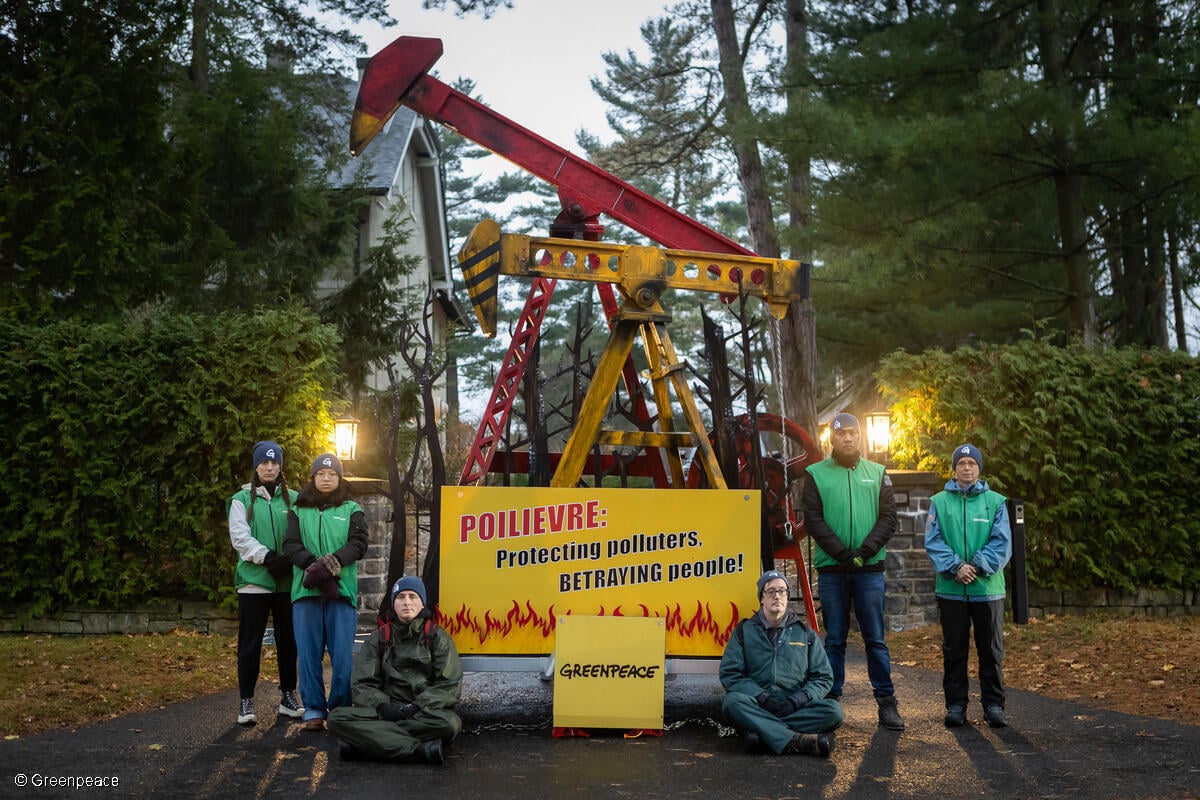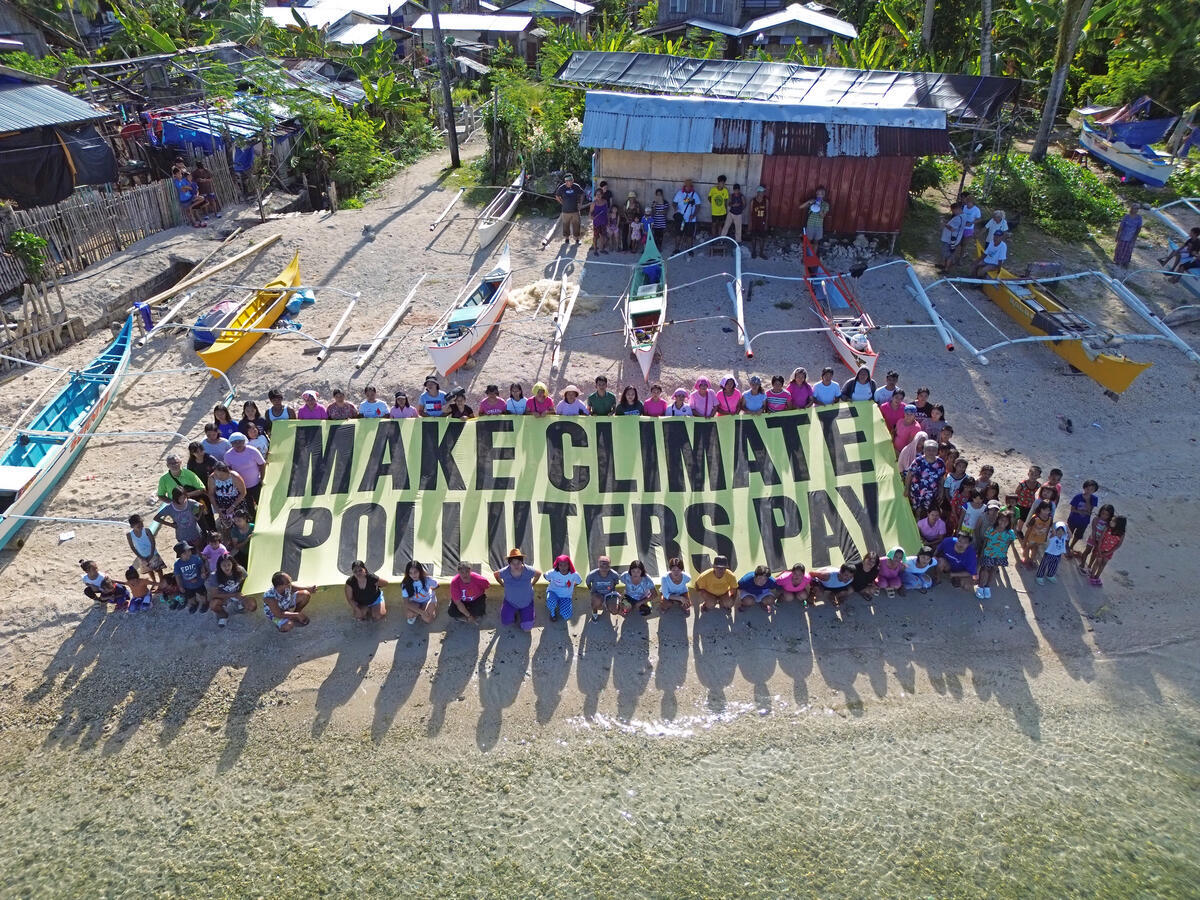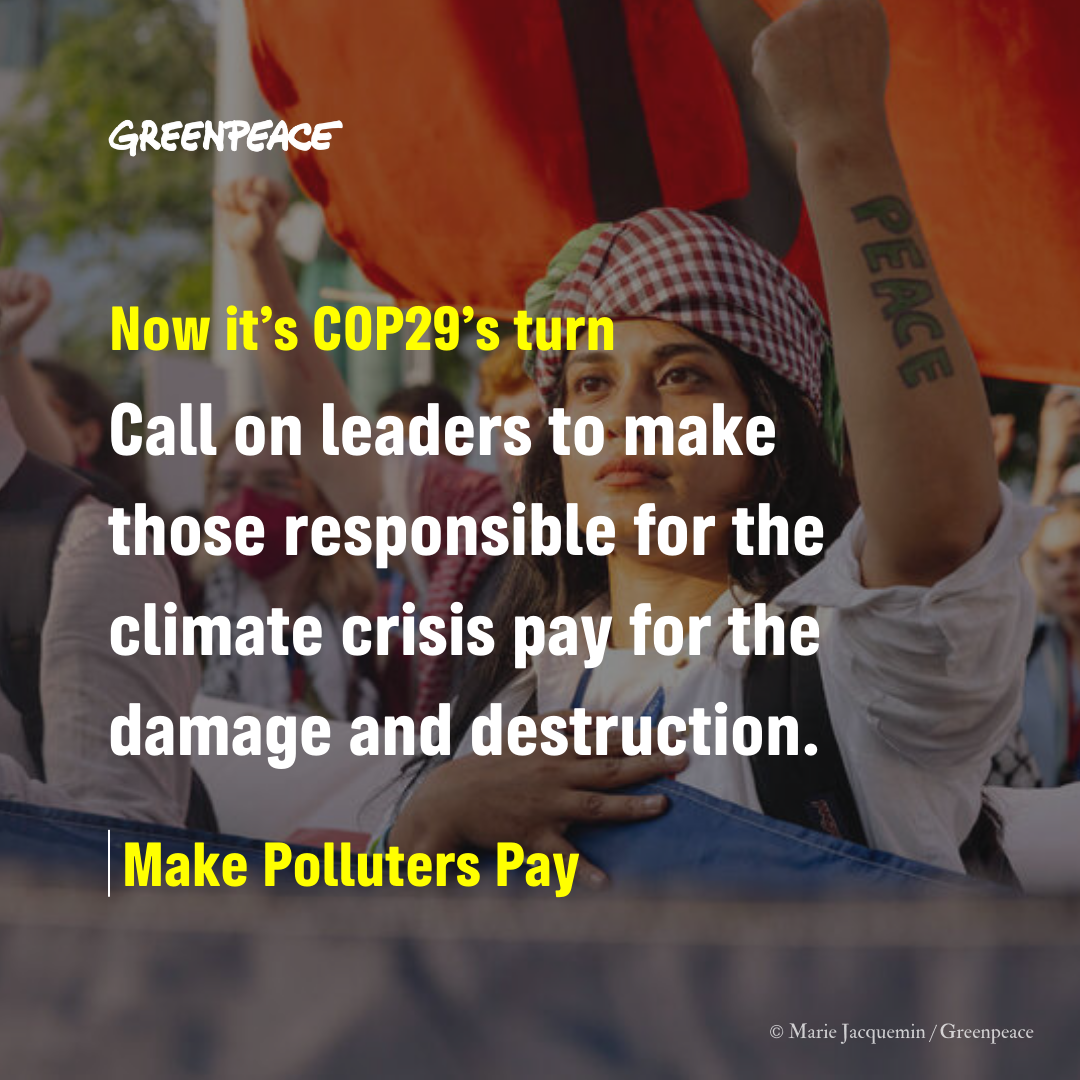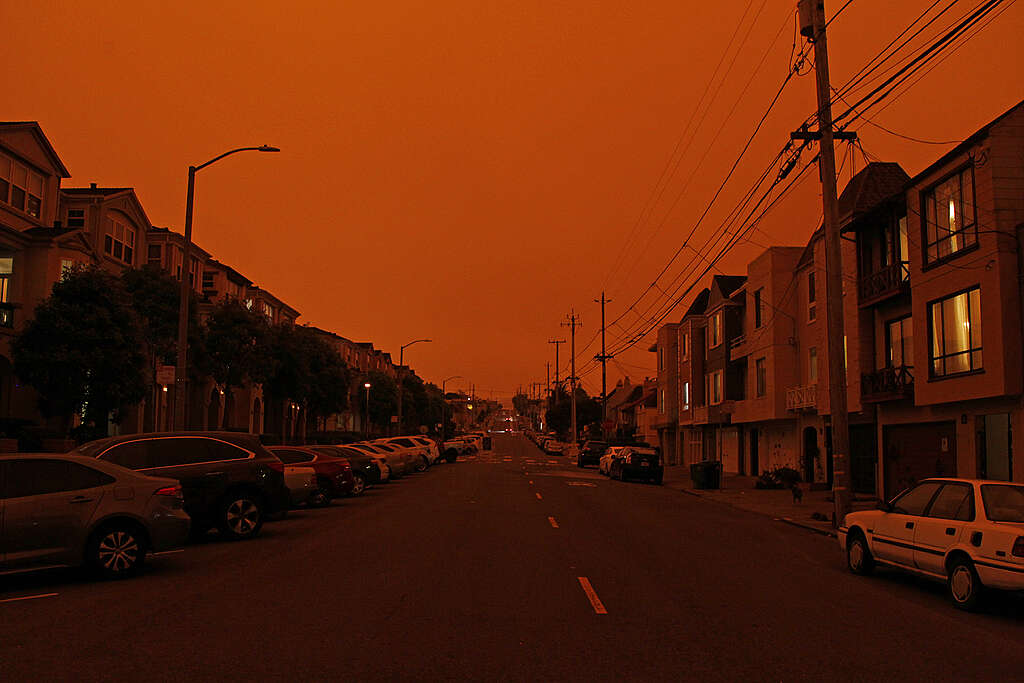
Do you remember the dystopian orange skies that took over New York (and twitter/X) last summer? The numerous headlines of climate records being broken one after another? The heartfelt images of wildfire destruction, hurricanes, floods and heatwaves damages? I certainly do.
Hottest days, the hottest month, and at the end of 2023, the hottest year. Ever. On. Earth.
While the climate crisis used to feel like a distant future for many, it is now lashing out in our faces, warning us that 2023 was just a dark sneak peek of what’s to come. Yet, beyond the pessimistic climate predictions, there are many ways we can mitigate and adapt to extreme weather, build resilience within our communities, repair the damages and restore a safe livable world for all. For this future reality to happen, we need to invest in climate recovery. And the main contributor to the climate crisis–the fossil fuel industry–should be the one to pick up the bill.
One event after another, extreme weather is taking over
As the planet continues to warm with the continuous burning of fossil fuels, extreme weather events like wildfires, heatwaves, floods and hurricanes, to name a few, are becoming more frequent and severe.
In 2023, Canada suffered its most destructive wildfire season ever recorded. From coast to coast, more than 18.5 million hectares of land burnt to the ground, prompting the evacuation of nearly 200,000 people, wreaking havoc in Indigenous and rural communities, and forcing millions beyond our borders to breathe in toxic air. This summer, a mid-June heatwave in Eastern Canada forced millions to seek shelter from feelings of 40°C heat.
Researchers found that both the 2023 wildfires in Eastern Canada and the June 2024 heatwave were made more intense and more likely due to the climate crisis.
It only takes a quick look at international media to realise that we are not alone. In Mexico, extreme heat in May and June 2024 killed 125 people. Earlier in the spring, a widespread heatwave forced millions of people across Asia to suffer through 40-degree heat, prompting thousands of school closures and putting internally displaced people such as in Gaza under extremely precarious and dangerous conditions. And in early July, Hurricane Beryl made a dramatic landfall on several Caribbean islands, causing catastrophic damage to the Northern islands of Grenada.
The list goes on. Extreme weather disrupts life as we know it, and impacted communities are left to deal with the costly aftermath of climate disasters.
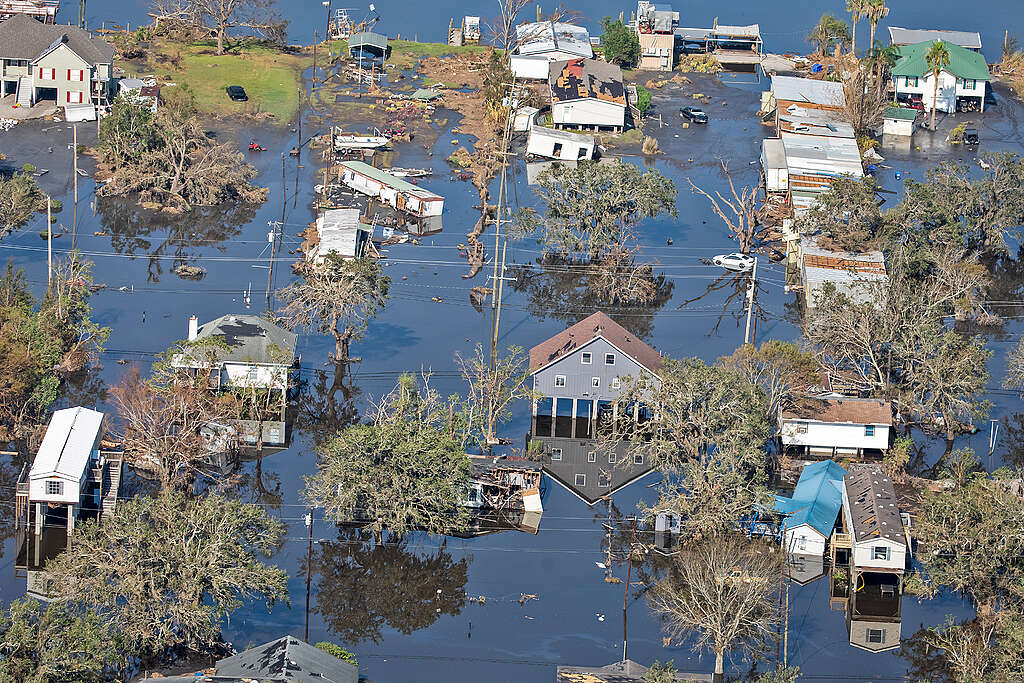
Extreme weather is costly yet Big Oil keeps making big money
In 2022 and 2023, extreme weather in Canada caused over $3.1 billion in insured damages. While the direct costs of climate disasters on people in Canada are growing every year, oil and gas extraction companies in Canada made a record $63.1 billion in profits in 2022, enough to cover the bill from insured damages 20 times over.
On the global stage, extreme weather events have amounted to an estimated US $2.8 trillion in damages between 2000 and 2019, or a staggering US $16.3 million an hour. It’s a mind-blowing price that falls on people like you and me.
As communities are reeling from the trauma of climate disasters and struggling to rebuild from wildfire, storm and flood damages, they face the constant threat of new extreme weather events impacting their lives. Reparation, adaptation and preparation have enormous costs, and instead of continuing their business as usual, the fossil fuel industry must pay for their pollution.
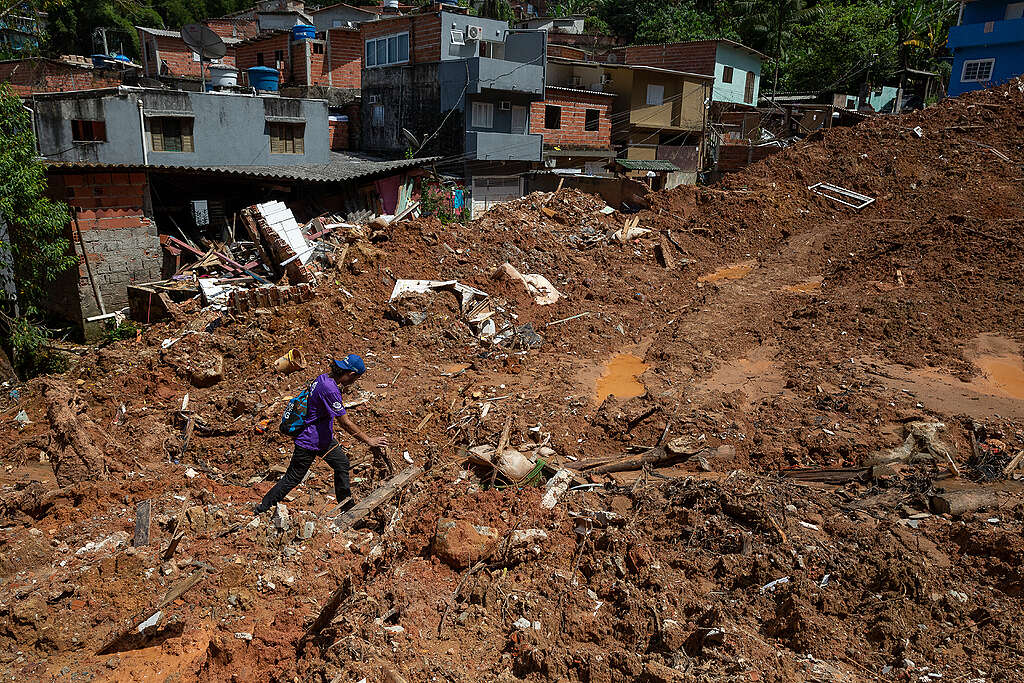
The solution: a Climate Recovery Fund financed by the fossil fuel industry
In the current landscape of environmental and climate legislation here in Canada, there is a gap in funding and policy to address the damages caused by the impacts of the climate crisis.
What we need is a Climate Recovery Fund to help communities and local governments prepare, respond and adapt to extreme weather.
The fund would be used to:
- Repair the direct and indirect damages caused by climate change impacts in Canada and abroad;
- Tackle and cover the costs of adaptation to extreme weather;
- Build resilience in communities on the frontlines of the climate crisis.
This means providing shelter, amenities, support, health and emergency care to people facing climate disasters. As the main contributor to the climate crisis, we think it’s only fair that the fossil fuel industry be the one financing this fund.
Practically speaking, the Climate Recovery Fund would be financed by strengthening existing climate and environmental legislation in Canada.
This could mean:
- Closing the giant loophole in the industrial carbon pricing system by removing exemptions for polluting industries;
- Amending the Net Zero Emission Accountability Act to assess and fine fossil fuel polluters for their contribution to the climate crisis;
- Expanding or increasing penalties for environmental violations.
Alternatively, the Climate Recovery Fund could be enacted as a new law similar to the Vermont Climate Superfund Act either at the federal or provincial level.
These are only a handful of options that will make the Climate Recovery Fund a reality and ensure communities are prepared for a world with more destructive climate disasters.
Dear Big Oil, we’re sending you the bill
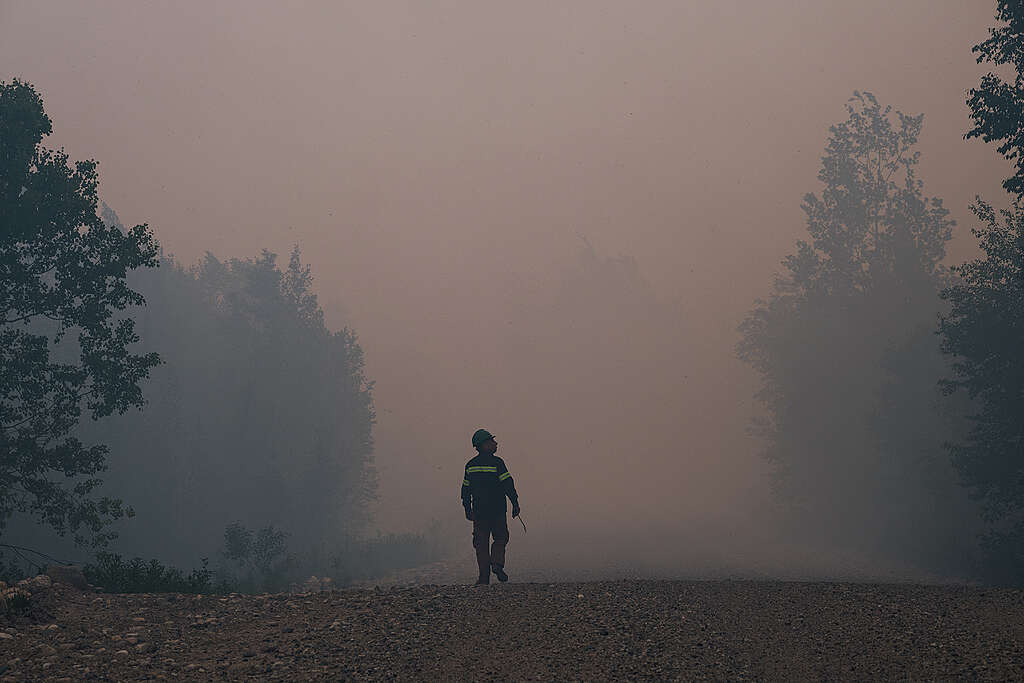
The science is now clear: extreme weather is a global killer and will continue affecting people’s lives and livelihoods for the foreseeable future. A Climate Recovery Fund would provide the necessary resources to build our resilience. By inflaming extreme weather from one continent to another, the fossil fuel industry needs to be held accountable for its actions and must immediately start paying into this new Climate Recovery Fund to repair the damages it has caused.

